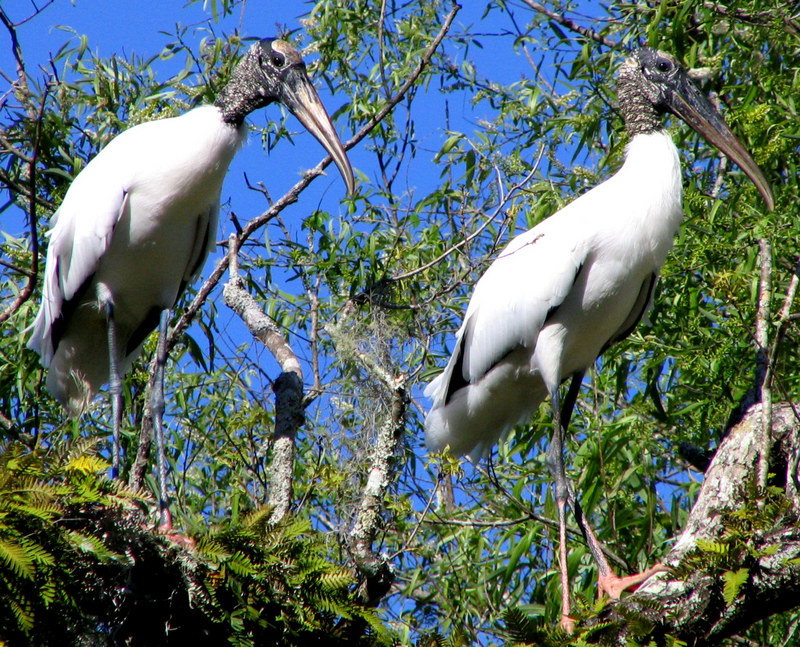Wood Stork (Mycteria americana) - Wiki Wood Stork
From Wikipedia, the free encyclopedia
[Photo] Wood Storks (Mycteria americana) on the Smith Canal near the St. Johns River in Florida. Taken by http://commons.wikimedia.org/wiki/User:Mwanner, 27 Feb, 2006.
| Permission is granted to copy, distribute and/or modify this document under the terms of the GNU Free Documentation License, Version 1.2 or any later version published by the Free Software Foundation; with no Invariant Sections, no Front-Cover Texts, and no Back-Cover Texts. A copy of the license is included in the section entitled "GNU Free Documentation License". |
The
Wood Stork (
Mycteria americana) is a large wading bird in the
stork family
Ciconiidae. It is a tropical species which breeds in much of South America, Central America and the Caribbean. There is a small and endangered breeding population in Florida Georgia and southern South Carolina, United States. The
Wood Stork is the only
stork that breeds in North America. The
Wood Stork was formerly called the Wood Ibis, though it is not really an ibis.
It is a resident breeder in lowland wetlands with trees. The large stick nest is built in a forest tree. They brood once a year, and 3-5 eggs are laid in the typical clutch. The eggs are incubated 27-32 days by both sexes. Their reproductive cycle is triggered when waterholes dry up sufficiently to concentrate fish in sufficient numbers for efficient feeding of the chicks.
The
Wood Stork is a broad-winged soaring bird that flies with its neck outstretched and legs extended.
The adult is a large bird, typically 1m tall with a 1.5 m wingspan. It appears all white on the ground, with blackish-gray legs and pink feet. In flight, the trailing edge of the wings is black. The head is dark brown with a bald, black face, and the thick downcurved bill is dusky yellow. Juvenile
birds are a duller version of the adult, generally browner on the neck, and with a paler bill.
The
Wood Stork walks slowly and steadily in shallow water up to its belly in open wetlands seeking its prey, which, like that of most of its relatives, consists of fish, frogs and large insects.
http://en.wikipedia.org/wiki/Wood_Stork| The text in this page is based on the copyrighted Wikipedia article shown in above URL. It is used under the GNU Free Documentation License. You may redistribute it, verbatim or modified, providing that you comply with the terms of the GFDL. |
